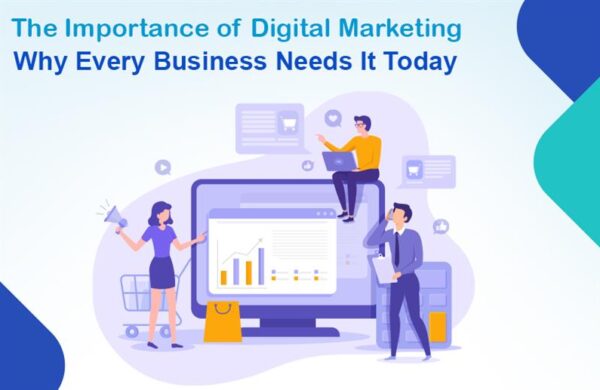The way people discover information online is changing rapidly. With the advent of generative AI tools like ChatGPT, Bard, and Bing AI, users are no longer limited to static lists of links. Instead, they receive dynamic, conversational answers to their questions. This shift is giving rise to a new approach called Generative Engine Optimisation (GEO), which is quickly becoming a vital complement or even competitor to traditional Search Engine Optimisation (SEO).
What exactly is the difference between GEO and SEO? And how can businesses adapt to staying visible in this evolving landscape? Let’s explore.
Understanding Traditional SEO

SEO (Search Engine Optimisation) is the long-standing practice of optimising your website so it ranks higher on search engines like Google, Bing, or Yahoo. The primary aim is to increase organic traffic by improving your site’s relevance, authority, and user experience.
SEO involves a range of tactics, such as:
- Keyword optimisation: Researching and using the right terms your audience is searching for.
- Content quality: Publishing in-depth, valuable content that satisfies user intent.
- Technical SEO: Make sure your website loads quickly, function smoothly on mobile devices, and maintains an organised layout.
- Link building: Earning backlinks from reputable websites to boost your domain authority.
SEO revolves around how search engines crawl, index, and rank content to present in the traditional list of blue links on the SERP (Search Engine Results Page).
What is GEO (Generative Engine Optimisation)?

GEO, or Generative Engine Optimisation, is an emerging strategy that focuses on optimising content for AI-powered generative engine tools that don’t just retrieve content but synthesise it into human-like answers.
When someone asks a tool like ChatGPT, “What’s the best CAD software for automotive design?” it doesn’t just point them to web pages. It crafts a summary by pulling information from multiple sources. This is where generative AI SEO strategies become crucial.
GEO emphasises crafting well-structured, credible content that generative AI tools can easily interpret and reference. While traditional SEO targets search rankings, GEO aims for inclusion in AI-generated outputs through authoritative content.
GEO vs SEO: The Key Differences
Here’s how GEO differs from conventional SEO:
| Criteria | SEO | GEO |
| Target | Search engines (Google, Bing) | Generative AI engines (ChatGPT, Bard) |
| Goal | Rank on SERPs for clicks | Be included in AI-generated answers |
| Optimization | Keywords, meta tags, backlinks, UX | Authority signals, structured data, factual clarity |
| Measurement | Organic rankings, traffic, conversions | Mentions or usage in AI outputs |
| User Interaction | Users click through to visit websites | Users often get instant answers without clicking |
The Importance of GEO in the Era of Generative AI
As generative AI tools become mainstream, many users may skip the traditional click-through process entirely. Instead, they trust AI summaries for quick decisions, whether it’s choosing software, understanding industry trends, or exploring design methodologies.
This means your content strategy can’t revolve around traditional SEO anymore. Ensure your content demonstrates authority, is fact-checked for accuracy, and is organised in a format that AI can easily interpret and integrate.
Practical Strategies for GEO in SEO
Since GEO vs SEO are not mutually exclusive, the smart approach is to integrate GEO tactics into your existing SEO strategy. Here’s how:
1. Publish clear, authoritative content: Generative engines tend to pull from sites they perceive as trustworthy. Invest in long-form, well-researched articles that cite credible sources.
2. Use structured data (schema markup): This helps AI understand your content contextually. For example, using the FAQ schema increases the chances of being picked up for direct answers.
3. Maintain factual precision: Unlike typical readers, AI tools look for concrete, verifiable information. Always back claims with data or references.
4. Establish topical authority: The more depth you provide on topics (like CAD automation or rapid prototyping), the more likely AI engines are to use your content.
5. Optimise for conversational queries: Generative AI often mirrors how humans ask questions. Incorporating Q&A sections or addressing “why,” “how,” and “what” queries can improve your chances.
GEO in SEO: Not a Replacement, But an Evolution

Some marketers worry that as AI answers become more comprehensive, traditional SEO might lose relevance. However, geo in seo is more about evolution than replacement. Think of it as a layered strategy:
- SEO gets you on search results, bringing clicks from those who still prefer exploring multiple sources.
- GEO ensures your expertise shows up directly in AI conversations, keeping your brand visible even when users don’t click through.
In fact, for technical industries like engineering design, manufacturing automation, or 3D modelling, all areas where Monarch Innovation works are featured in AI-generated summaries, building strong thought leadership.
Looking Ahead: How to Future-Proof Your Digital Strategy
Search habits are shifting, but they won’t swing entirely in one direction overnight. Traditional search still dominates, but as generative AI grows, adapting early will give your business a competitive edge.
To future-proof your strategy:
- Blend traditional SEO practices with generative engine optimisation efforts.
- Monitor new metrics, like whether your content is cited in AI summaries.
- Keep updating content to reflect the latest data and trends, making it more appealing for generative tools.
Conclusion
The rise of generative AI is reshaping how people consume information online. While SEO remains critical for driving traffic, Generative Engine Optimisation is becoming essential for staying visible in AI-driven conversations.
Businesses that understand the difference between GEO vs SEO and skillfully combine both will lead to brand trust, authority, and digital influence.
Short takeaway:
Generative AI isn’t killing SEO; it’s transforming it. By blending traditional search engine optimisation with smart generative engine optimisation, companies like Monarch Innovation can ensure they stay top-of-mind, no matter how users choose to search.






